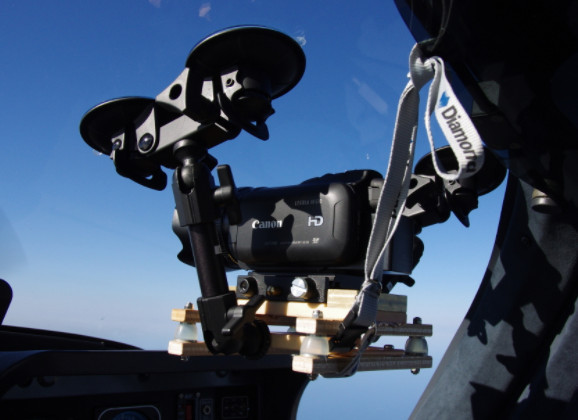The GoPro has a bigger battery which you can attach to the back. You can attach all sorts of cables, such as audio, because there is a housing that’s designed just for that purpose, and it’s still possible to attach to anything with suction cup, clamp and other items. When I looked into the GoPro peripheral program, I found it way better thought through than the Sony. The Sony, as you mentioned, has a very bad software design and some real no gos. Its product designers most definitely where ‘UI’.
The distortion reportedly can be fully eliminated by editing software which is delivered with it, but I idn’t try that though.
The sony does better video, no doubt. It doesn’t really convince me as a product though…..
The problem with externally attached anything is that you lose water proofing.
Sure the Sony software is crap. The X3000 is a lot less crappy than the X1000 though.
I would be interested to know how good the GP lens correction software is and especially whether it produces any corner artefacts if you correct enough to make the horizon exactly straight. This is a (mostly) lens corrected version of the above video – for some reason the file is much smaller than the previous one! I will replace the file with a better one in 2 days when my Vimeo upload allowance is reset.
You can see the artefacts in the way the scenery disappears into the two bottom corners.
If I was to summarise the X3000 and the X1000 for flying movies then I would say the X3000 is better because it can use a 256GB SD card and it has much less distortion. Its stabilisation cannot be used at 4K because the slightest vibration screws up the video. For 1080P the X3000 appears pointless unless you want to do stuff like 120fps which is desirable for slow motion work.
That will unfortunately not work with a camera in the 140kt slipstream. In fact the airflow itself may be causing vibration. I think any mounting solid enough (e.g. 2 or 3 large suction pads) will couple enough vibration in to mess up the video.
Disabling stabilisation does seem to solve it.
I have just re-uploaded the video above, replacing it with a new 2GB file. It looks a lot better.
Unfortunately it also reveals a lot of “jello”, especially in the bottom right area. Yet this is with optical stabilisation OFF so clearly there is a problem still…
It turns out that, predictably, the camera is always stabilising the sensor. It is merely that if stabilisation=OFF it holds it suspended in a neutral position, whereas if stabilisation=ON it moves it around according to accelerometer signals. Powering up a disassembled camera proves this is the case. With no power, the sensor just flops around (it is spring-loaded into a neutral position but any movement would disturb it). With power, stabilisation=OFF, it remains centred.
I don’t know if the camera uses any position feedback on it. Most likely the sensor is held in that position magnetically, in a “lowest energy” position (not sure what the right term is).
I modded the camera to fix the sensor in place rigidly. Here is how it was done:
The modified camera works perfectly  This video is 4K, 30fps, rendered to 4K at about 30mbps
This video is 4K, 30fps, rendered to 4K at about 30mbps
Same video, rendered to 1080P, 30fps. I doubt anybody can tell the difference…
And finally here is a 1080P 60fps video, same camera, which to me looks so close to the 4K ones that one wonders why anyone bothers with 4K – unless watching the footage on a 4K monitor and on an ultra top end PC.
Huge thanks! I have been beating my head against a wall for two weeks trying to get jello-free flying movies out of this camera. Had some success building my own anti-vibration mount (rather than use the AKA-MVA, which clearly won’t cut it as an external underwing mount), but there’s still enough jello to be annoying. Figured the frequency response of BOSS was not adequate to the task and results might be better if the sensor were locked in place. Couldn’t find any relevant commentary on YouTube or elsewhere. Now you have proved it.
First proper flight after the modification – it works:
@N532D – I reckon that Sony antivibration mount is completely useless in most applications. To get an antivib mount to work properly without having the camera wobbling around on top of it in a “rotational” manner, one needs a multi point mount structured so that the camera cannot rotate. It can move up and down and side to side as that is not visible in the video. This is an example of a DIY mount for a camcorder:
http://s101.photobucket.com/user/peterh337/library/antivibration%20mount?sort=3&page=1
There is a lot of this stuff out there for professional users but the above mount worked brilliantly.

Those four silicone rubber standoffs were about $20 each!
I’m starting to get somewhere with my underwing anti-vibe mount. Test video from the most recent iteration is here:
Not perfect, but watchable. Much better than it used to be. Had light turbulence during the flight. No mods to the camera yet. Mount includes a circular polarizer.
There is still a bit of jello there e.g. after 16:40 in the trees.
The use of a polariser is clever. You get a darker sky and richer colours in the ground. However I don’t think you can put one on the waterproof housing, can you?